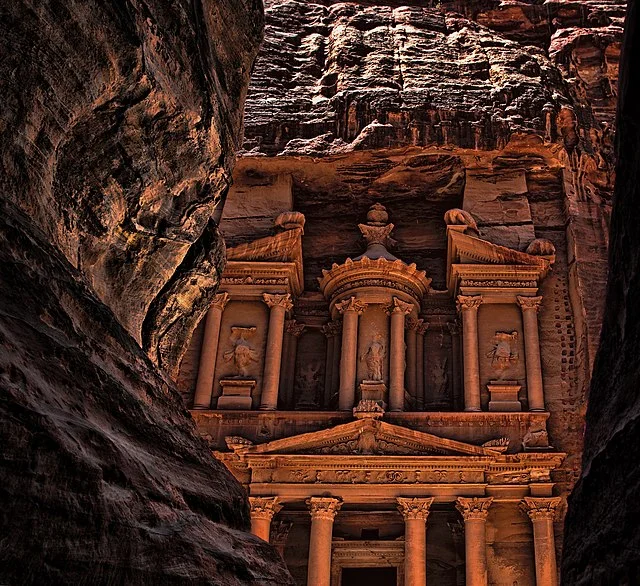Al-Khazneh, also known as “The Treasury,” stands as one of the most iconic structures in Petra, Jordan. Carved into the rose-red cliffs of the Petra valley, this archaeological marvel dates back to the 1st century AD. It is a prime example of Nabataean architecture and reflects the wealth and artistic sophistication of the Nabataean civilization.
Get your dose of History via Email
Historical Background
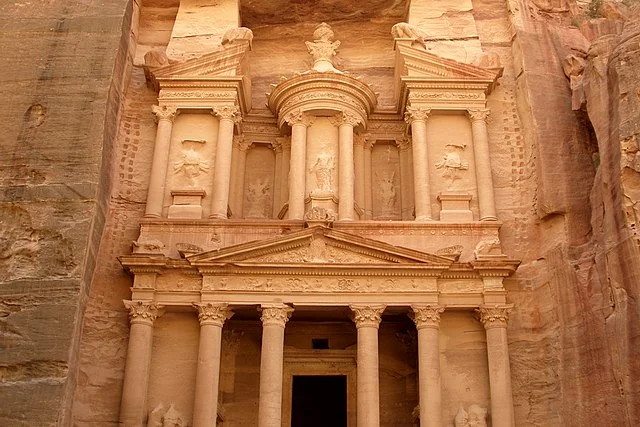
The Nabataeans were an ancient Arab people who settled in Petra around the 4th century BC. They established a thriving trade network, connecting the Arabian Peninsula to the Mediterranean. This wealth allowed them to create impressive architectural works, including Al-Khazneh.
Historical records suggest that Al-Khazneh served as a royal tomb. Its name, meaning “The Treasury,” likely originated from a local legend. People believed that the structure contained treasures hidden by the Pharaoh of Egypt.
Architectural Features
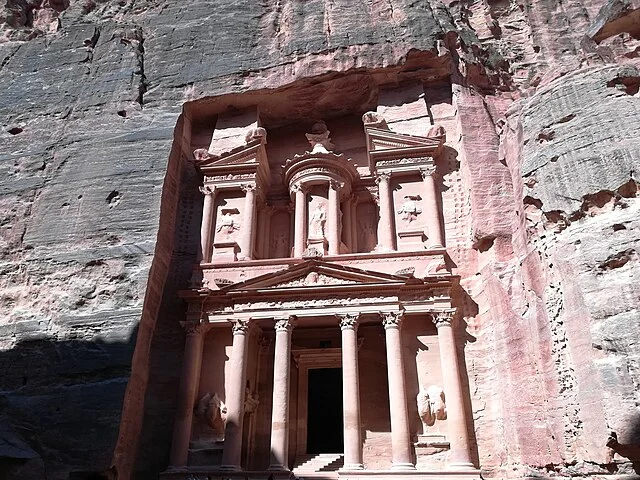
Al-Khazneh exhibits Hellenistic influences, particularly in its façade. The building measures approximately 39 meters (128 feet) wide and 43 meters (141 feet) high. Its elaborate carvings and columns reflect both Greek and Eastern styles.
The façade is divided into three levels. The top level features a broken pediment with a large urn, while the middle level showcases intricate Corinthian columns. The lower level displays a series of niches and statues.
Function and Significance
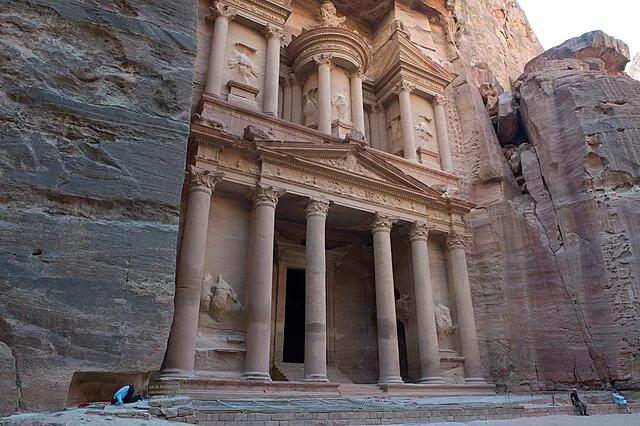
Although primarily considered a tomb, Al-Khazneh also served as a temple. Scholars believe it played a role in the Nabataean religious practices. The structure’s grand design reflects the significance of the deceased, possibly a Nabataean king.
Al-Khazneh also symbolizes the power and influence of the Nabataean Kingdom. Its location along trade routes allowed the Nabataeans to control commerce in the region. Thus, Al-Khazneh represents not only a burial site but also a political statement.
Preservation and Tourism
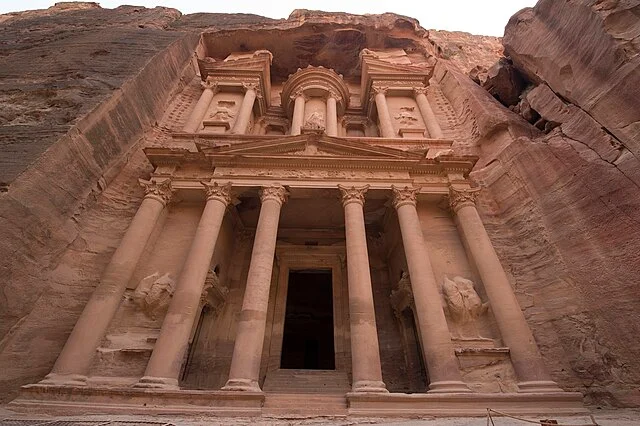
Today, Al-Khazneh attracts thousands of visitors annually. Its UNESCO World Heritage Site status underscores its cultural and historical importance. The Jordanian government, alongside various organizations, works to preserve the site.
However, tourism poses challenges. Increased foot traffic can lead to erosion and wear on the structure. Therefore, conservation efforts focus on maintaining the balance between visitor access and preservation.
Conclusion
Al-Khazneh remains a testament to the ingenuity of the Nabataean civilization. Its architectural brilliance and historical significance continue to fascinate scholars and tourists alike. As research and preservation efforts progress, Al-Khazneh will remain a key symbol of Jordan’s rich heritage.
Source:

